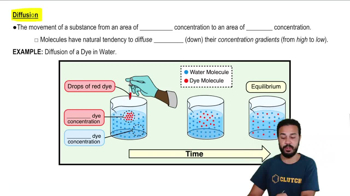Large molecules such as peptides and proteins move into and out of the bloodstream by way of:
(a) Continuous capillaries
(b) Fenestrated capillaries
(c) Thoroughfare channels
(d) Venules
 Verified step by step guidance
Verified step by step guidance Verified video answer for a similar problem:
Verified video answer for a similar problem:


 4:36m
4:36mMaster Introduction to Capillaries with a bite sized video explanation from Bruce Bryan
Start learning